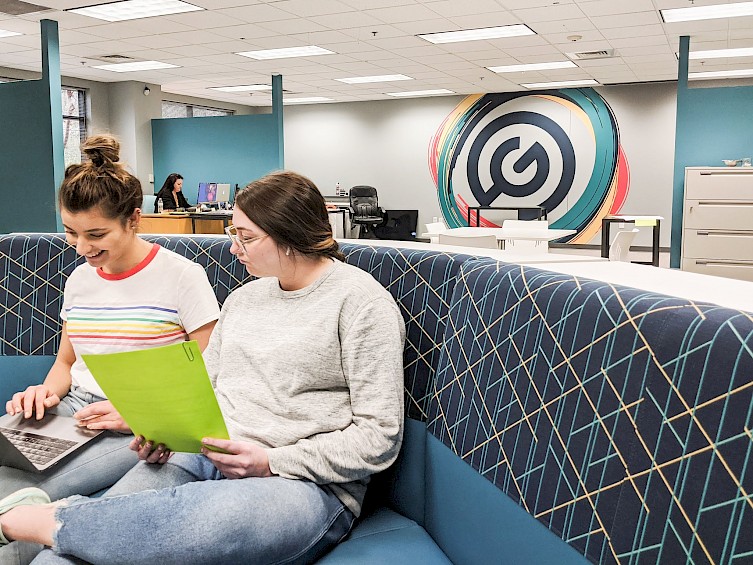GWL Advertising has recently moved offices! Since we have had over a month to settle into our new open-office space, it only seems fitting to discuss the pros and cons of this type of workspace. Which is better for you? An open floor plan that allows your employees to think freely while promoting a collaborative environment, or sectioned off areas that can encourage a quieter workspace and less teamwork? As an agency we have experienced both, I would like to discuss this.
With that said, let’s talk about the pros and cons of the open-office space. As someone who gets distracted a little too easily, I was a bit nervous when we made the move. An office space that can accommodate a vast array of employees with various working space needs is critical. Issues can arise when employees are forced to work in one or the other and are not given options for both.
Pros of an Open-Office Plan
By eliminating individual offices, open-office designs remove the hierarchy associated with private and corner offices. Open floor plans place everyone on a level playing field, which lends itself to a more cohesive office environment where employees respect one another as equals. That is not to say that there is not someone who is in charge, but the attention isn’t being drawn to this person’s position by his or her personal office space.
Additionally, open floor plans tend to encourage employees to spend more time standing up and moving around. Employees can stretch their bodies and their minds, removing much physical and cognitive tension from the workday.

Cons of an Open-Office Plan
Closed office spaces result in less social contact among employees. In 2018, Harvard Business School researchers analyzed how the change to an open workspace affected staff collaboration. The study objectively measured the impacts of open-offices by using electronic badges and microphones to record employee interactions as well as track employee email usage. The study found that an open office reduced face-to-face interactions by about 70%. Instead, email messages increased by 50%. The open architecture seemed to induce a withdrawal response among employees; co-workers seemed to crave less social contact than in an open-office and chose instead to send emails and instant messages rather than speak to their coworkers face-to-face.
Some ways to counteract this and a technique that we have used in our office is creating a central lounge area with a big couch and stand-up desks. Here people can congregate for quick meetings or change up their scenery. This space has allowed for more collaboration and a greater sense of community.

Personally, I am enjoying working in an open-office as it gives me the ability to better socialize with my coworkers. Don’t get me wrong; sometimes I get distracted by other people talking or walking past my desk. Fortunately, I am able to go into the “war room,” which is our office brainstorming room. When we transitioned into an open-office plan GWL Advertising wanted to provide its employees with these types of secluded work environments.
Both open-office and closed-office spaces have their pros and cons, but ultimately it comes down to the needs of the individual office and its employees. Completely open office environments can be noisy, yet foster collaboration. An understanding that your employee’s working habits and needs differ is crucial when making the decision to change your office set up.
